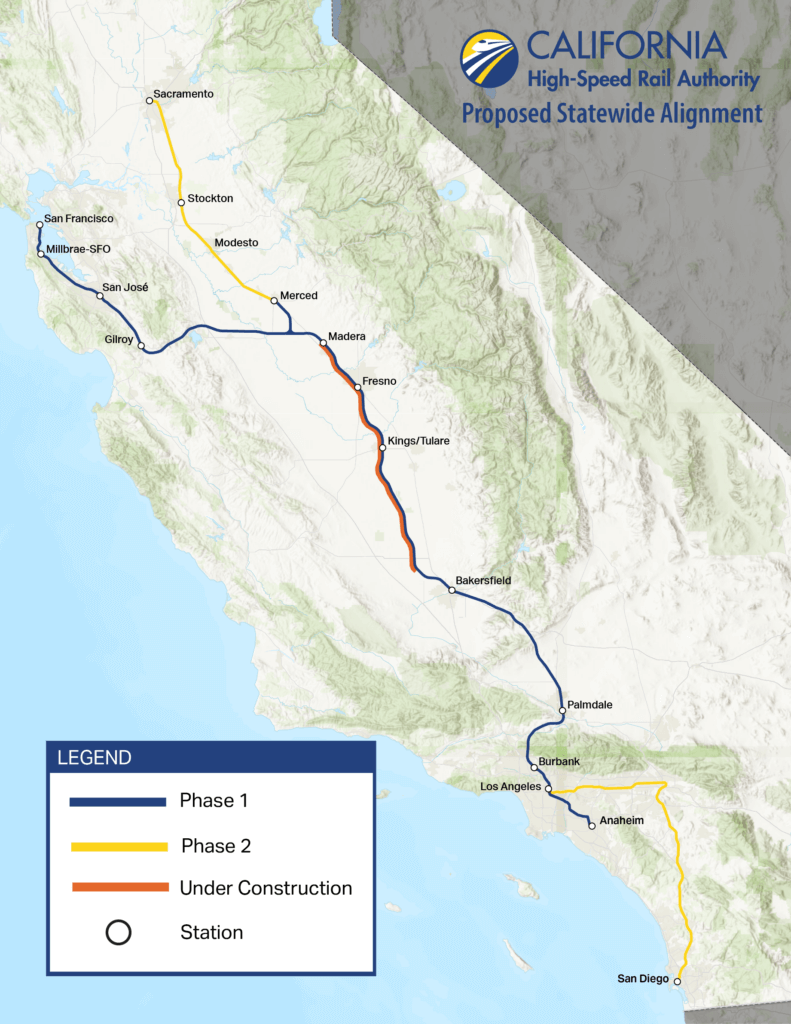CALIFORNIA HIGH-SPEED RAIL WILL FUNDAMENTALLY TRANSFORM how people move around the state. By connecting California’s mega-regions, the project will contribute to economic development and a cleaner environment, create jobs, and preserve agricultural and protected lands.
Facts & Figures
The Numbers
(as of September 2025)
Environmental Protection
(2015 to June 2023)
System Map
This map shows the phased implementation of the California High-Speed Rail system. Phase 1 of the project will connect San Francisco to Anaheim via the Central Valley in less than three hours. Phase 2 will extend the system to Sacramento and San Diego.
Work has begun to extend the 119-mile Central Valley segment currently under construction to 171 miles from Merced to Bakersfield. Phase 1 is environmentally cleared, and we are collaborating with our regional partners and funding various projects, including grade separations in Northern and Southern California.
The 494-mile Phase 1 system involves segments between the following cities: San Francisco, San José, Gilroy, Merced, Madera, Fresno, Kings/Tulare, Bakersfield, Palmdale, Burbank, Los Angeles, and Anaheim. Phase 2 will include stops in Sacramento, Stockton, Modesto, San Bernardino, Riverside, and San Diego.
Learn more about progress in each region:
Northern California Overview
Central Valley Overview
Southern California Overview
View more maps: https://hsr.ca.gov/communications-outreach/maps/
Stay up-to-date on construction progress: https://buildhsr.com/
More Information
Find more information about high-speed rail in California. From factsheets and regional newsletters to maps and outreach events, get on board with the most up‑to‑date program information.















